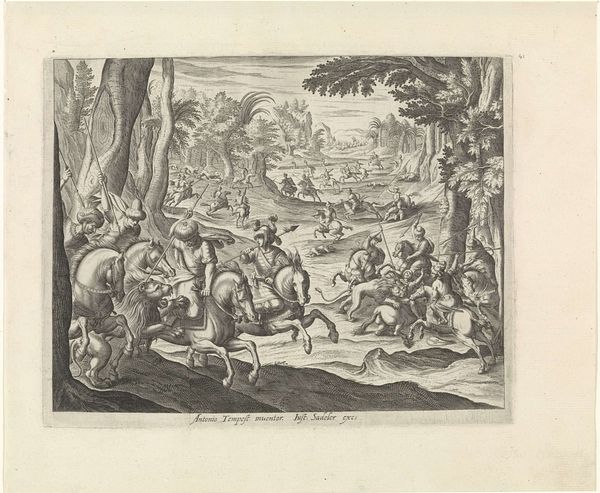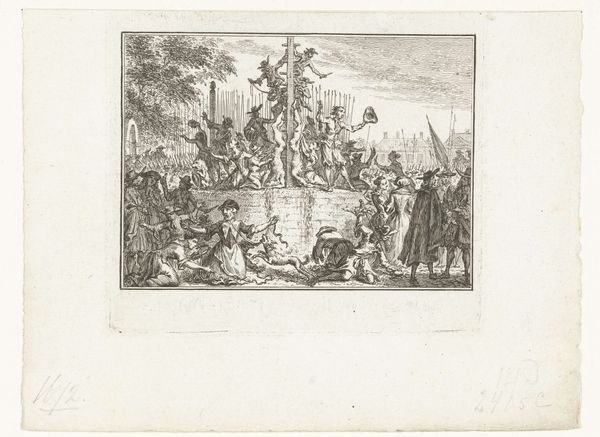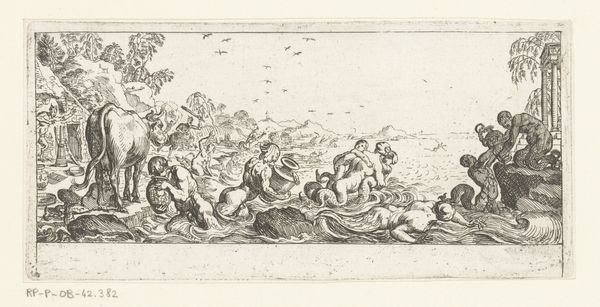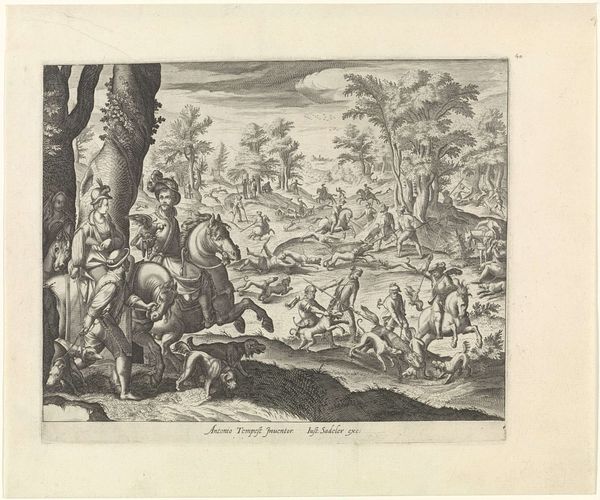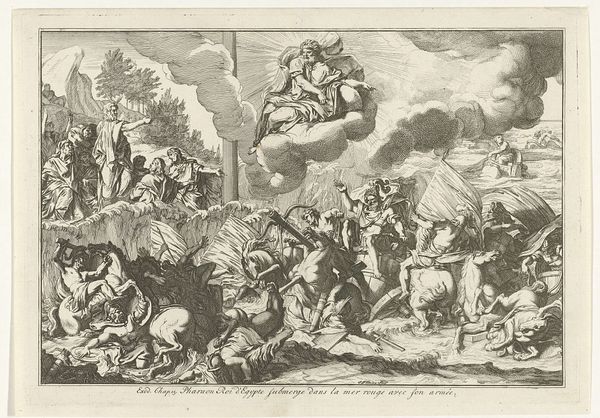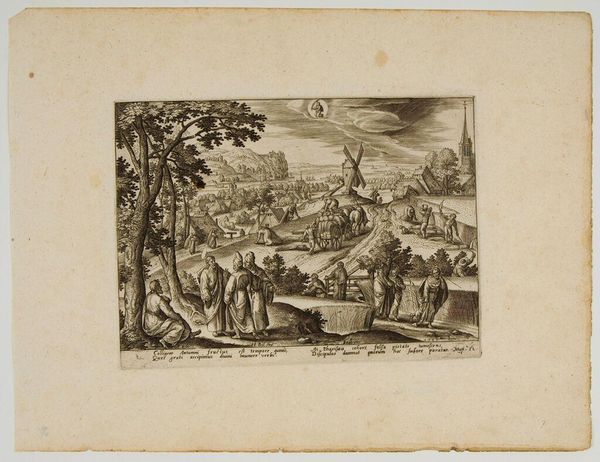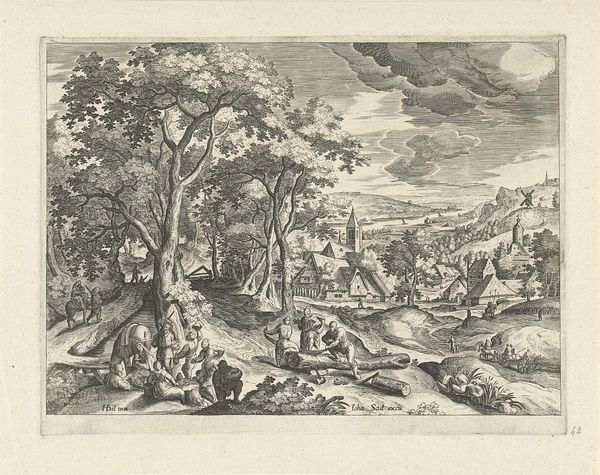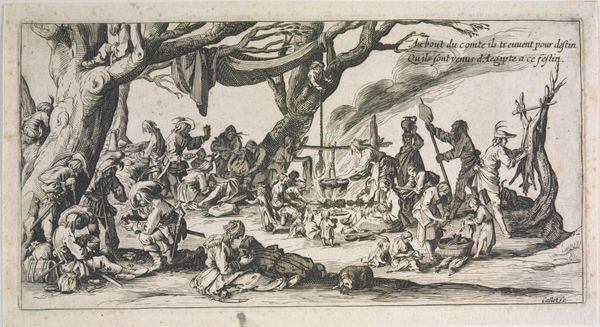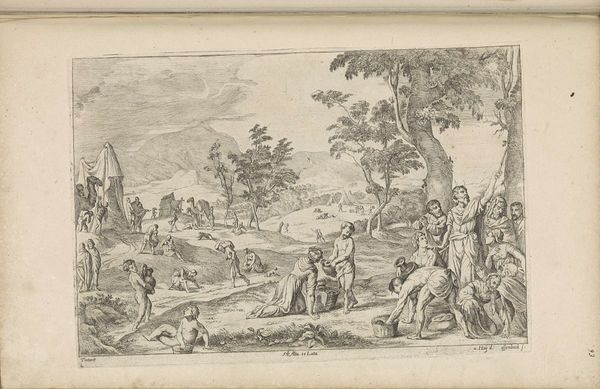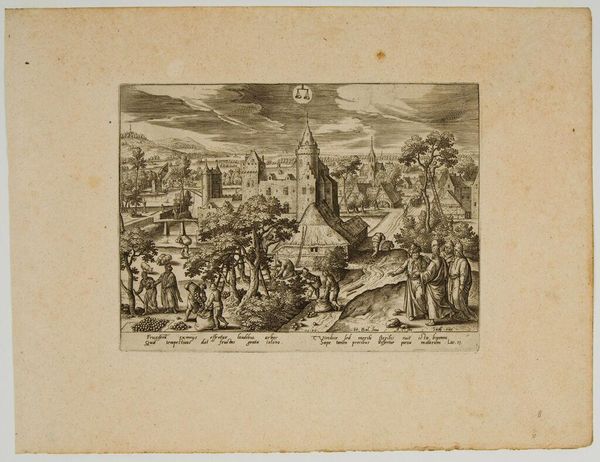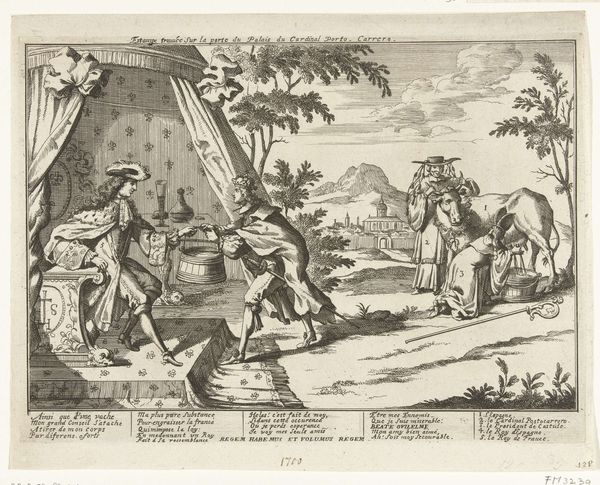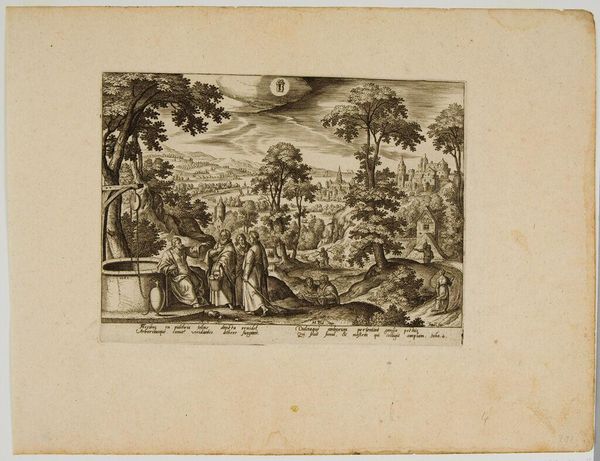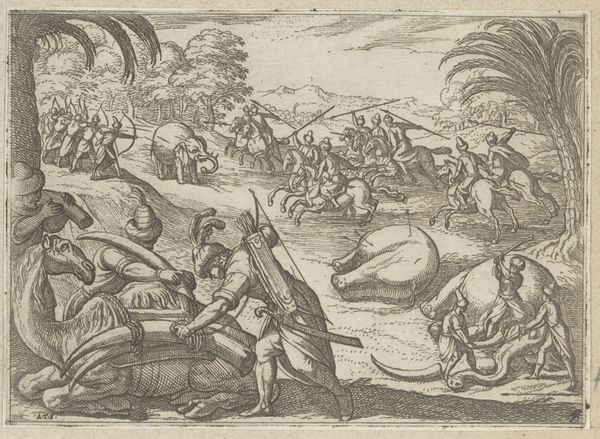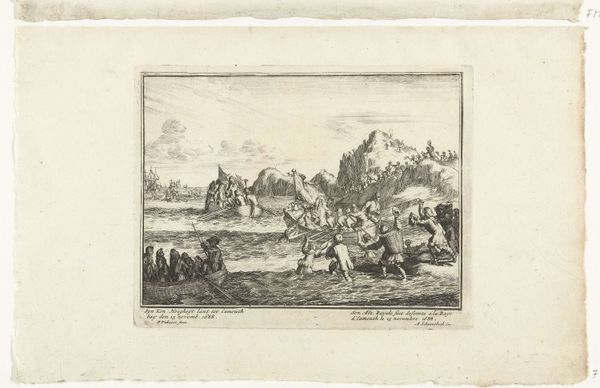
print, etching, engraving
#
baroque
# print
#
etching
#
landscape
#
northern-renaissance
#
engraving
Dimensions: height 128 mm, width 180 mm
Copyright: Rijks Museum: Open Domain
Curator: Ah, the magic of a sweeping landscape, wouldn't you say? Before us, we have an engraving titled "Landschap met paard en wagen," or "Landscape with Horse and Cart," likely crafted between 1612 and 1652. The artist, sadly, remains anonymous, a secret keeper of the Rijksmuseum’s collection. It's that classic blend of etching and engraving... it just oozes Northern Renaissance vibes with a touch of Baroque drama, doesn't it? Editor: Absolutely. What strikes me immediately is the tension. We have this idyllic setting with a waterfall and a hilltop town, but then your eye is drawn to the bottom right corner: the looming cross, a moment of quiet worship, or perhaps suffering. The journey feels more ominous than pastoral. Curator: Ominous, yes, perhaps. But for me, the allure lies in the meticulous detail. See how the engraver rendered the foliage of the trees or the distant mountains... there is so much to linger over, even on such a small scale. The hustle and bustle of daily life against the grand theatre of nature, quite a contrast to chew on. Editor: Indeed. And the composition really drives home the class divisions of the time. A merchant-type figure leads his horse-drawn carriage through this landscape, while peasants either work on or pray by a roadside shrine. These are landscapes that foreground labor, inviting us to consider the role of exploitation in the era's artistic production. Curator: You’re right, and it’s funny how landscapes of the era tended to romanticize work! Even here, with a touch of piety at the cross, it feels…contained. Less an expression of struggle, more like a piece of the scene. Still, there's a kind of peaceful resignation, as though it were a natural part of life. Perhaps the artist wanted to find beauty within the existing system? Or critique the normalisation of these hierarchies. It really pulls you both ways! Editor: Yes, precisely that push and pull. And I can't help but notice the dark cave in the lower left with two figures. Perhaps even evoking the “cave” of Plato? So it seems, this could reference humanity’s incomplete and often distorted understanding of the "real" world… something to keep you awake at night. Curator: You know, pondering such symbolism amidst this serene tableau definitely tickles my brain. So much encoded within such subtle strokes... It transforms what might seem like a pretty picture into something that pricks at your consciousness, which, if you ask me, is a good job, no matter the time period. Editor: Precisely. And isn’t that the best kind of art? It speaks across centuries because it has something urgent to say about our own messy, unequal present.
Comments
No comments
Be the first to comment and join the conversation on the ultimate creative platform.
